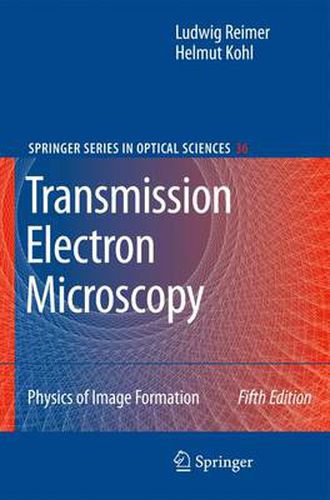Readings Newsletter
Become a Readings Member to make your shopping experience even easier.
Sign in or sign up for free!
You’re not far away from qualifying for FREE standard shipping within Australia
You’ve qualified for FREE standard shipping within Australia
The cart is loading…






This title is printed to order. This book may have been self-published. If so, we cannot guarantee the quality of the content. In the main most books will have gone through the editing process however some may not. We therefore suggest that you be aware of this before ordering this book. If in doubt check either the author or publisher’s details as we are unable to accept any returns unless they are faulty. Please contact us if you have any questions.
The aim of this monograph is to outline the physics of image formation, electron-specimen interactions, and image interpretation in transmission el- tron microscopy. Since the last edition, transmission electron microscopy has undergone a rapid evolution. The introduction of monochromators and - proved energy ?lters has allowed electron energy-loss spectra with an energy resolution down to about 0.1 eV to be obtained, and aberration correctors are now available that push the point-to-point resolution limit down below 0.1 nm. After the untimely death of Ludwig Reimer, Dr. Koelsch from Springer- Verlag asked me if I would be willing to prepare a new edition of the book. As it had served me as a reference for more than 20 years, I agreed without hesitation. Distinct from more specialized books on speci?c topics and from books intended for classroom teaching, the Reimer book starts with the basic principles and gives a broad survey of the state-of-the-art methods, comp- mented by a list of references to allow the reader to ?nd further details in the literature. The main objective of this revised edition was therefore to include the new developments but leave the character of the book intact. The presentation of the material follows the format of the previous e- tion as outlined in the preface to that volume, which immediately follows. A few derivations have been modi?ed to correspond more closely to modern textbooks on quantum mechanics, scattering theory, or solid state physics.
$9.00 standard shipping within Australia
FREE standard shipping within Australia for orders over $100.00
Express & International shipping calculated at checkout
This title is printed to order. This book may have been self-published. If so, we cannot guarantee the quality of the content. In the main most books will have gone through the editing process however some may not. We therefore suggest that you be aware of this before ordering this book. If in doubt check either the author or publisher’s details as we are unable to accept any returns unless they are faulty. Please contact us if you have any questions.
The aim of this monograph is to outline the physics of image formation, electron-specimen interactions, and image interpretation in transmission el- tron microscopy. Since the last edition, transmission electron microscopy has undergone a rapid evolution. The introduction of monochromators and - proved energy ?lters has allowed electron energy-loss spectra with an energy resolution down to about 0.1 eV to be obtained, and aberration correctors are now available that push the point-to-point resolution limit down below 0.1 nm. After the untimely death of Ludwig Reimer, Dr. Koelsch from Springer- Verlag asked me if I would be willing to prepare a new edition of the book. As it had served me as a reference for more than 20 years, I agreed without hesitation. Distinct from more specialized books on speci?c topics and from books intended for classroom teaching, the Reimer book starts with the basic principles and gives a broad survey of the state-of-the-art methods, comp- mented by a list of references to allow the reader to ?nd further details in the literature. The main objective of this revised edition was therefore to include the new developments but leave the character of the book intact. The presentation of the material follows the format of the previous e- tion as outlined in the preface to that volume, which immediately follows. A few derivations have been modi?ed to correspond more closely to modern textbooks on quantum mechanics, scattering theory, or solid state physics.